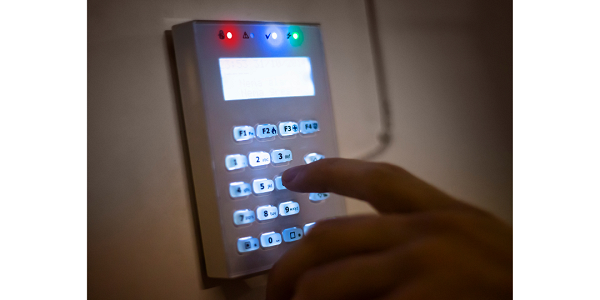Monitored vs Unmonitored Intruder Alarms

Intruder alarms are a common security measure that can provide protection against intrusion, such as unauthorised entry, into a building. Although most buildings have an intruder alarm, not all have the correct type.
An intruder alarm system can be a significant investment in the security of your premises, so it makes sense to ensure you are aware of the different types of alarm systems and choose the right one.
This blog will look at differences between ‘Monitored’ and ‘Unmonitored’ alarms. This will hopefully allow for a more informed decision to be made when selecting a suitable alarm for your property.
Download our Guide to Intruder Alarms Here
Before I get into the details, it is worth remembering that the best approach when protecting assets is to adopt a layered approach to security; think of a medieval castle with its layers of security (a moat, thick perimeter wall, large door, high towers and a keep). In the same way that a large perimeter wall gives a castle one layer of security, intruder alarms also give a business one layer of security.
Whilst a single layer of security may provide enough protection to certain locations, other locations may require different layers of security or more layers. And this is where alarm monitoring comes in.
Monitored Intruder Alarms
Often referred to as ‘remote signalling’, or sometimes ‘remote monitored’ systems. In addition to having a site warning device, an alarm transmission system (ATS) product is used to transmit alarm signals to a continuously manned alarm receiving centre (ARC).
At the ARC, the alarm can be investigated & confirmed, and a response initiated that aims to intercept the threat before it reaches the ‘target’. Each of these: the transmitted alarm, the investigation & confirmation and the response is a layer of security. Each can be included or omitted from your security plan as you see fit or as the level of risk dictates.
Monitored intruder alarms tend to be used at higher risk businesses or those with valuable content and items to protect. The aim of these layers of security is to neutralise the threat before it reaches the target or valuable assets. Providing a more effective level of security and greater peace of mind.
The cost of the additional layers of security is balanced against the potential for loss to the business.
Unmonitored Alarm Systems
Often referred to as ‘noise only’ (or sometimes ‘locally signalled’) systems, their activation is usually only indicated by the activation of an audible warning device, e.g., a siren, located on the outside of the premises.
Response to such systems relies on someone nearby both hearing the alarm and then taking suitable action to investigate its cause or alert others to the activation.
Unmonitored Alarm systems are typically used on lower risk properties which have fewer valuable items inside or are of a lower risk of intrusion. They are cheaper with no service charge to monitor the alarms, but also provide less comprehensive security as they require someone responding to the noise of the alarm sounding.
Key Points
Decision on the type of alarm should be based on risk. With more assets and more expensive assets in a single place, the risk of intrusion/theft increases. This means that it may make more sense to invest more money into a more secure alarm system i.e. a monitored alarm system.
Sometimes less is more. If the level of risk to your business has been evaluated as low, it will probably be more cost effective to invest in a simpler and cheaper unmonitored intruder alarm system.
Research. This blog has only covered the basics, researching options is must. Look at our Guide to Intruder Alarms here.





